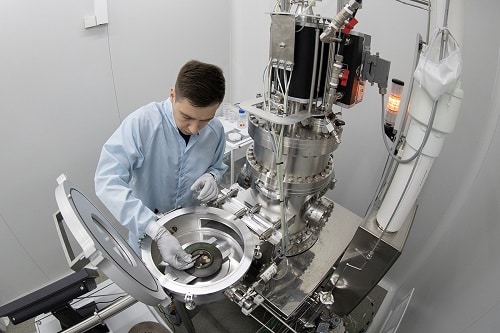Li-Ion batteries have come a long way in powering portable electronics devices. From having unstable and highly explosive electrodes to more stable and less volatile elctrodes, these compact devices are paving way for new technologies that is set to revolutionise the entire electronics industry.

In order to come up with a solution for the world’s increasing energy problems, the Li-Ion battery was created. While the battery proved to be highly beneficial for powering portable electronics devices, its electrodes had to go undergo a lot of changes before the present ones (made from lithium cobalt-oxide/lithium iron phosphate and graphite), were deemed safe for usage.
Li-ion batteries have a high energy density, which enables them to store a large amount of electric charge in a small volume. This comes helpful for miniature devices, such as smartwatches, smartphones and so on. With further reduction in size becoming quite challenging for researchers nowadays, a new approach for manufacturing these batteries is required.
Printed electrodes
Now, scientists from Peter the Great St. Petersburg Polytechnic University, Russia have gone one step ahead and developed a technology – for printing the electrodes using an inkjet printer. To print electrodes that have all the essential characteristics of a conventionally produced Li-Ion battery, one needs to carefully select the composition and viscosity of the printing solution for the electrodes. Although it was quite challenging, the scientists were able to create a special, stable colloidal solution that had a different flow characteristic, which enabled the printing of the cathode using an inkjet printer.
By studying the electrochemical properties of the printed electrodes and the composition of the cathode material, scientists have come to a conclusion that this technology will help to power biosensors, wearable electronics and other miniature devices.
“To reduce the difference in energy density, we propose to use promising compounds based on lithium and manganese-enriched cathode material with an increased capacity,” said Maxim Maximov, researcher in the National Technological Initiative center of Peter the Great St. Petersburg Polytechnic University. “We demonstrated the possibility of electrodes manufacturing with this material by inkjet printing. We have also found that the energy intensity of the material in the printed electrode and the electrode made by traditional technology are close”.
As compared to electrodes manufactured by conventional methodology, inkjet-printed electrodes have a low high energy density. This can be caused because of the differences in active layer density, active material proportion etc. Aware of this shortcoming, scientists plan to further conduct research on increasing the energy intensity of the printed electrodes and the prototype of the Li-Ion battery.
The results of the study are published in the journal Energy Technology.






